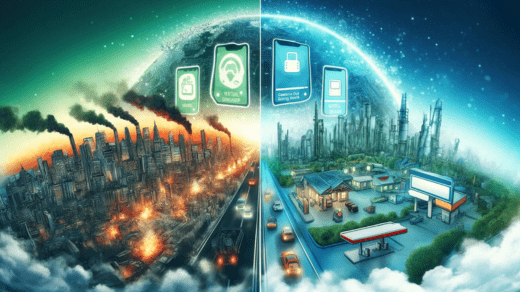In the modern world, managing our carbon footprint has become a critical aspect of corporate responsibility and individual accountability. With the rise of technology, new tools such as virtual cards and fuel cards are playing significant roles in reducing carbon emissions and promoting sustainability. In this comprehensive article, we will delve into the intricacies of these innovations and their impact on carbon footprint reduction.
What is Carbon Footprint?
A carbon footprint is the total amount of greenhouse gases, primarily carbon dioxide, that are emitted directly or indirectly by human activities. This includes emissions from transportation, electricity usage, and industrial processes. The goal of reducing one’s carbon footprint is to minimize the release of these harmful gases into the atmosphere, thereby combating climate change.
The Role of Technology in Reducing Carbon Footprint
Technology has introduced numerous solutions aimed at reducing our carbon footprint. Among these, virtual cards and fuel cards have emerged as practical tools that help both businesses and individuals track and manage their emissions more effectively.
Virtual Cards: A Digital Solution for Carbon Management
What are Virtual Cards?
Virtual cards are digital versions of traditional payment cards. They are created for online transactions and can be used in place of physical cards. Virtual cards offer several advantages, including enhanced security, convenience, and the ability to track expenses with greater precision.
How Virtual Cards Reduce Carbon Footprint
- Paperless Transactions: By using virtual cards, businesses and consumers can eliminate the need for physical paper receipts and statements. This reduction in paper usage contributes to lower deforestation rates and reduced carbon emissions from paper production and disposal.
- Reduced Physical Card Production: The production of physical cards involves the use of plastic and other materials, which generate carbon emissions during manufacturing and transportation. Virtual cards eliminate the need for these materials, thus reducing the associated carbon footprint.
- Enhanced Expense Tracking: Virtual cards provide detailed digital records of transactions, enabling better tracking and management of expenses. This can lead to more efficient budgeting and resource allocation, reducing unnecessary purchases and waste.
Fuel Cards: Streamlining Fuel Management for Lower Emissions
What are Fuel Cards?
Fuel cards are specialized payment cards used primarily for purchasing fuel. They are commonly used by businesses with fleets of vehicles to monitor fuel expenses and improve operational efficiency.
How Fuel Cards Contribute to Carbon Footprint Reduction
- Optimized Fuel Consumption: Fuel cards often come with features that allow businesses to track fuel usage and identify inefficiencies. By analyzing this data, companies can implement strategies to optimize fuel consumption, such as better route planning and regular vehicle maintenance, leading to lower fuel consumption and emissions.
- Incentives for Eco-Friendly Practices: Many fuel card programs offer incentives for adopting eco-friendly practices, such as using biofuels or electric vehicles. These incentives encourage businesses to make greener choices, thus reducing their overall carbon footprint.
- Reduced Fraud and Misuse: Fuel cards provide detailed transaction records, which help prevent fraud and misuse. By ensuring that fuel is used only for legitimate business purposes, companies can reduce unnecessary fuel consumption and its associated emissions.
The Synergy Between Virtual Cards and Fuel Cards
When used together, virtual cards and fuel cards can create a powerful synergy that amplifies the benefits of each tool. By integrating the digital tracking capabilities of virtual cards with the fuel management features of fuel cards, businesses can achieve a more comprehensive approach to reducing their carbon footprint.
Integrated Expense Management
Combining virtual cards and fuel cards allows businesses to consolidate their expense management systems. This integration provides a holistic view of all expenses, enabling more effective monitoring and control of both general and fuel-related expenditures.
Enhanced Reporting and Analytics
With detailed data from both virtual and fuel cards, businesses can generate comprehensive reports and analytics. These insights can identify patterns and trends in spending, fuel consumption, and carbon emissions, helping companies develop targeted strategies for improvement.
Sustainable Business Practices
By adopting virtual and fuel cards, businesses can demonstrate their commitment to sustainability. These tools help reduce waste, improve efficiency, and lower emissions, aligning with global efforts to combat climate change and promote sustainable practices.
Conclusion
In conclusion, virtual cards and fuel cards represent innovative solutions that contribute significantly to the reduction of carbon footprints. By leveraging the advantages of digital technology and streamlined fuel management, businesses and individuals can make meaningful strides towards a more sustainable future. The integration of these tools not only enhances operational efficiency but also reinforces a commitment to environmental responsibility.





